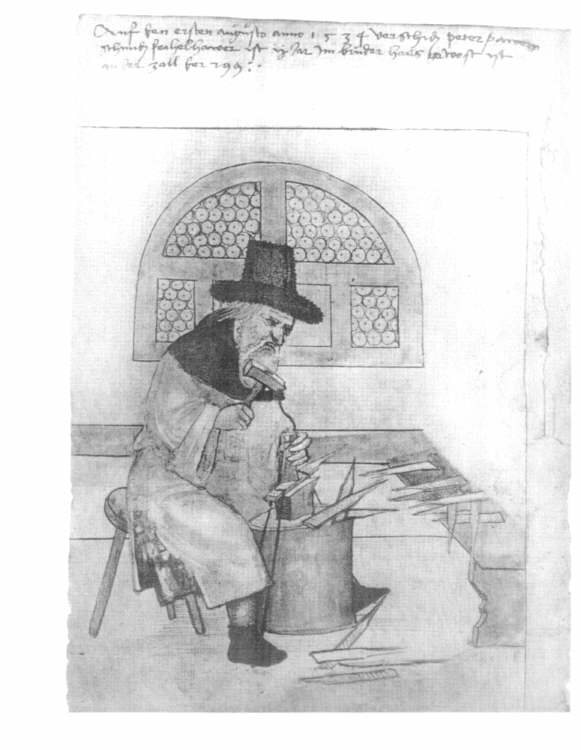Peter Pauernschmid

Peter Pauernschmid was a file maker in Nürnberg in the early 1500's.
This is a drawing of him at work in his room at the Mendelschen
Zwolfbruderstiftstung (literally, the Mendel's 12-brother's charity home
for the aged). This was a brotherhood, or association, that catered to
elderly craftsmen. It was founded in the fifteenth century and operated
for about 200 years.
The hand writing at the top of the page says: "auf den ersten augusto anno 1534 vershid Peter Pauernschmid, feihelhauer, ist ii jar im bruderhaus gewest, ist an der zall der 299." Loosely translated, this says: "On the first of August 1534 AD, Peter Pauernschmid, file maker, died; had lived already 2 years in the 'brotherhouse' in room 299."
There is also a caption that goes along with this picture, it was written in 1534. The caption states:
The file maker in high black hat and shirt, sits behind the anvil and strikes blows in the flat file with hammer and chisel. The file is fastened firmly to the anvil on the right and left with 'fastbelts'.
In the corner [lie] finished and half-finished files and raw material. In the back wall of the workshop is a broad, round window with five-fold partioning.
What makes this drawing of interest to scholars is that it is one of the few documents that shows exactly how files were made by hand. When you think about, it's obvious that tools in this time period had to be made by hand, but it is not so obvious how this was done. Some shapes such as the file body could be cast, but how did they get all the grooves in the file? The answer was to cut them in by hand. One method for doing this was to strap the file to an anvil and chisel the grooves in by striking with a hammer. This was the job of a feilenhauer. It turns out that the invention and production of metal files was critical to the development of the machining industry. Therefore, this particular illustration has been copied in several German books written over the last 150 years on the history of machining or tool making. The original Hausbuch, rests in a musuem in Nurnberg Germany. However, in 1966 a reprint was published with high quality reproductions (some in color).